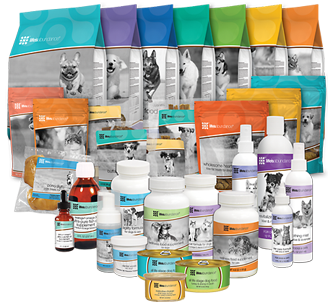Top 10 Dog Poisons
06/04/2010
Last year, there were more than 100,000 cases of pet poisoning in the U.S. Many of these were caused by substances you probably have in your home, substances that may seem perfectly harmless to you. But just because something is safe for people doesn’t mean it won’t hurt beloved pets. Some of the most dangerous dog poisons are foods and medications we take on a daily basis.
Depending on how a particular substance affects your dog’s body and how much was ingested or inhaled, pet poisoning symptoms can include gastrointestinal and neurological problems, cardiac and respiratory distress, coma, and even death.
Top 10 Dog Poisons
Dog poison No. 1: Medications for people. Drugs that might be beneficial, or even life-saving, for people can have the opposite effect in pets. And it doesn’t always take a large dose to do major damage.
Some of the most common and harmful medications that poison dogs include:
• Nonsteroidal anti-inflammatory medications, such as ibuprofen or naproxen, which can cause stomach and intestinal ulcers or kidney failure.
• Antidepressants, which may cause vomiting and, in more serious instances, serotonin syndrome – a dangerous condition that raises temperature, heart rate, and blood pressure, and may cause seizures.
• Isoniazid, a tuberculosis drug, is difficult for dogs to process. Even one tablet can cause problems in a small dog. Signs of poisoning include seizures and coma.
Dog poison No. 2: Flea and tick products. You may think you’re doing your dog a favor when you apply products marketed to fight fleas and ticks, but thousands of animals are unintentionally poisoned by these products every year. Problems can occur if dogs accidentally ingest these products or if small dogs receive excessive amounts.
Dog poison No. 3: People food. Your canine companion may look so cute as he sits there begging for a bite of your chocolate cake or a chip covered in guacamole, but not giving him what he wants could save his life. Animals have different metabolisms than people. Some foods and beverages that are perfectly safe for people can be dangerous, and sometimes fatal, for dogs.
• Chocolate. Though not harmful to people, chocolate products contain substances called methylxanthines that can cause vomiting in small doses, and death if ingested in larger quantities. Darker chocolate contains more of these dangerous substances than do white or milk chocolate. The amount of chocolate that could result in death depends on the type of chocolate and the size of the dog. For smaller breeds, just half an ounce of baking chocolate can be fatal, while a larger dog might survive eating 4 to 8 ounces. Coffee and caffeine have similarly dangerous chemicals.
• Alcohol. Symptoms of alcohol poisoning in animals are similar to those in people, and may include vomiting, breathing problems, coma and, in severe cases, death.
• Avocado. You might think of them as healthy, but avocadoes have a substance called persin that can act as a dog poison, causing vomiting and diarrhea.
• Macadamia nuts. Dogs may suffer from a series of symptoms, including weakness, overheating, and vomiting, after consumption of macadamia nuts.
• Raisins. Experts aren’t sure why, but these fruits can induce kidney failure in dogs. Even a small number may cause problems in some dogs.
• Xylitol. This sweetener is found in many products, including sugar-free gum and candy. It causes a rapid drop in blood sugar, resulting in weakness and seizures. Liver failure also has been reported in some dogs.
Dog poison No. 4: Rat and mouse poison. Rodenticides, if ingested by dogs, can cause severe problems. The symptoms depend on the nature of the poison, and signs may not start for several days after consumption. In some instances, the dog may have eaten the poisoned rodent, and not been directly exposed to the toxin.
Dog poison No. 5: Pet medications. Just as we can be sickened or killed by medications intended to help us, cases of pet poisoning by veterinary drugs are not uncommon. Some of the more commonly reported problem medications include painkillers and de-wormers.
Dog poison No. 6: Household plants. They may be pretty, but plants aren’t necessarily pet friendly. Some of the more toxic plants to dogs include:
• Azaleas and rhododendrons. These pretty flowering plants contain toxins that may cause vomiting, diarrhea, coma, and potentially even death.
• Tulips and daffodils. The bulbs of these plants may cause serious stomach problems, convulsions, and damage to the heart.
• Sago palms. Eating just a few seeds may be enough to cause vomiting, seizures, and liver failure.
Dog poison No. 7: Chemical hazards. Not surprisingly, chemicals contained in antifreeze, paint thinner, and chemicals for pools can act as dog poison. The pet poisoning symptoms they may produce include stomach upset, depression, and chemical burns.
Dog poison No. 8: Household cleaners. Just as cleaners like bleach can poison people, they are also a leading cause of pet poisoning, resulting in stomach and respiratory tract problems.
Dog poison No. 9: Heavy metals. Lead, which may be in paint, linoleum, and batteries, can be poisonous if eaten by your dog, causing gastrointestinal and neurological problems. Zinc poisoning may occur in dogs that swallow pennies, producing symptoms of weakness from severe anemia.
Dog poison No. 10: Fertilizer. Products for your lawn and garden may be poisonous to pets that ingest them.
What to do for suspected dog poisoning
If you think your dog has been poisoned, try to stay calm. It is important to act quickly, but rationally.
First, gather up any of the potential poison that remains — this may be helpful to your veterinarian and any outside experts who assist with the case. If your dog has vomited, collect the sample in case your veterinarian needs to see it.
Then, try to keep your pet calm and call your veterinarian or the ASPCA Animal Poison Control Center (APCC) at (888) 426-4435. Experts at the APCC are available to answer questions and provide guidance 24 hours a day for a $60 consultation fee.
Poison Protection: Pet-Proofing Your House
The best way to reduce the chances that your beloved dog will be the victim of pet poisoning is by preventing exposure to dangerous substances.
• Keep all medications, even those in child-proof bottles, in cabinets that are inaccessible to your dog. If you inadvertently drop a pill on the floor, be sure to look for it immediately. Supervise anyone, such as the elderly, who may need help taking medications.
• Always follow guidelines on flea or tick products.
• Although you can give some “people foods” safely to your pets as a treat, others are toxic. If you have any questions about what is safe, ask your veterinarian. Or, err on the safe side and give treats made specifically for animals.
• Be sure any rodenticides you use are kept in metal cabinets or high on shelves where your pets can’t find them. Remember that dogs can be fatally poisoned by eating an exposed rodent, so always be very cautious about using these products. Tell your neighbors if you put out rat bait, so they can protect their pets from exposure, and ask them to do the same for you.
• When buying plants for your home, opt for those that won’t cause problems if your dog happens to nibble on them. The ASPCA has an online list of toxic and nontoxic plants by species. If you choose to have toxic plants, be sure they are kept in a place where your animals can’t reach them.
• Store all chemicals and cleaners in pet-inaccessible areas of your home.


 Life's Abundance Pet Foods
Life's Abundance Pet Foods
Leave a Reply